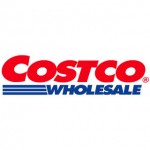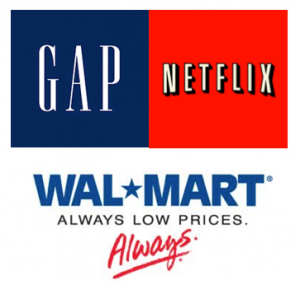![[image]](http://si.wsj.net/public/resources/images/MK-CE096_WALFLU_G_20130618174350.jpg)
In a recent Wall Street Journal article, “Wal-Mart’s E-Stumble”, Amazon was confirmed as the leader in online sales due to its large U.S. warehouse network, but Wal-Mart is trying to find ways to compete. Although Wal-Mart is not only building its warehouse network and looking at other opportunities to lower logistics and distribution costs, Amazon posted web sales of $61 billion, compared to an estimated $7.7 billion for Wal-Mart. It was stated by former Wal-Mart executives that Wal-Mart was late to the e-commerce game. By taking this “wait and see” approach into the e-commerce business, Wal-Mart lost valuable market share to its competitors that it has not been able to regain. As more consumers purchase items via the internet it will be even more necessary for management to be creative in finding new ways to pick-up customer business.
In an attempt to compete in e-commerce Wal-Mart will either ship from warehouses, have workers package products and send from individual store locations or even in certain store locations set up in-store lockers for e-commerce customers to pick-up items. Wal-Mart may be able to take advantage of same day delivery for grocery items that other companies started to try and promote. Currently the store isn’t set up for same day delivery of fruits and vegetables, but stores like Amazon have started to build there infrastructure for shipping same day perishable items. Recent acquisitions by Wal-Mart, including the company’s purchase of Chinese online retailer Yihaodian, have helped to increased this years fiscal global e-commerce earnings. I believe that it will take more of these acquisitions for in order to increase at the pace to pick up market share. This could be in the form of warehousing, logistics or even software.
I find it strange that a company as large as Wal-Mart has not been able to be more competitive in e-commerce and that management took a backseat early on in this quickly growing market. Not only in the U.S. but in markets like China you are seeing huge e-commerce business by companies such as Costco and Macy’s. These companies have found that this can be a way to limit risk and costs by not needing to have stores, but just have warehouses in low rent areas. Using the vast supply chains of these companies will continue to push them to increase their e-commerce sales.
Over the past few years I have used e-commerce for its convenience and ease of searching for products. In terms of groceries I still like to go to the store in-person to make my choices, but for pretty much anything else, I’ll shop via e-commerce. From the articles I’ve read and people I’ve spoke with it appears that this is the trend in the marketplace.
Do you think it’s necessary for Wal-Mart to increase its e-commerce market share in order to excel? Do you expect that the current ideas Wal-Mart has to increase e-commerce sales will work or are there other ideas that would work better for Wal-Mart’s business model?




